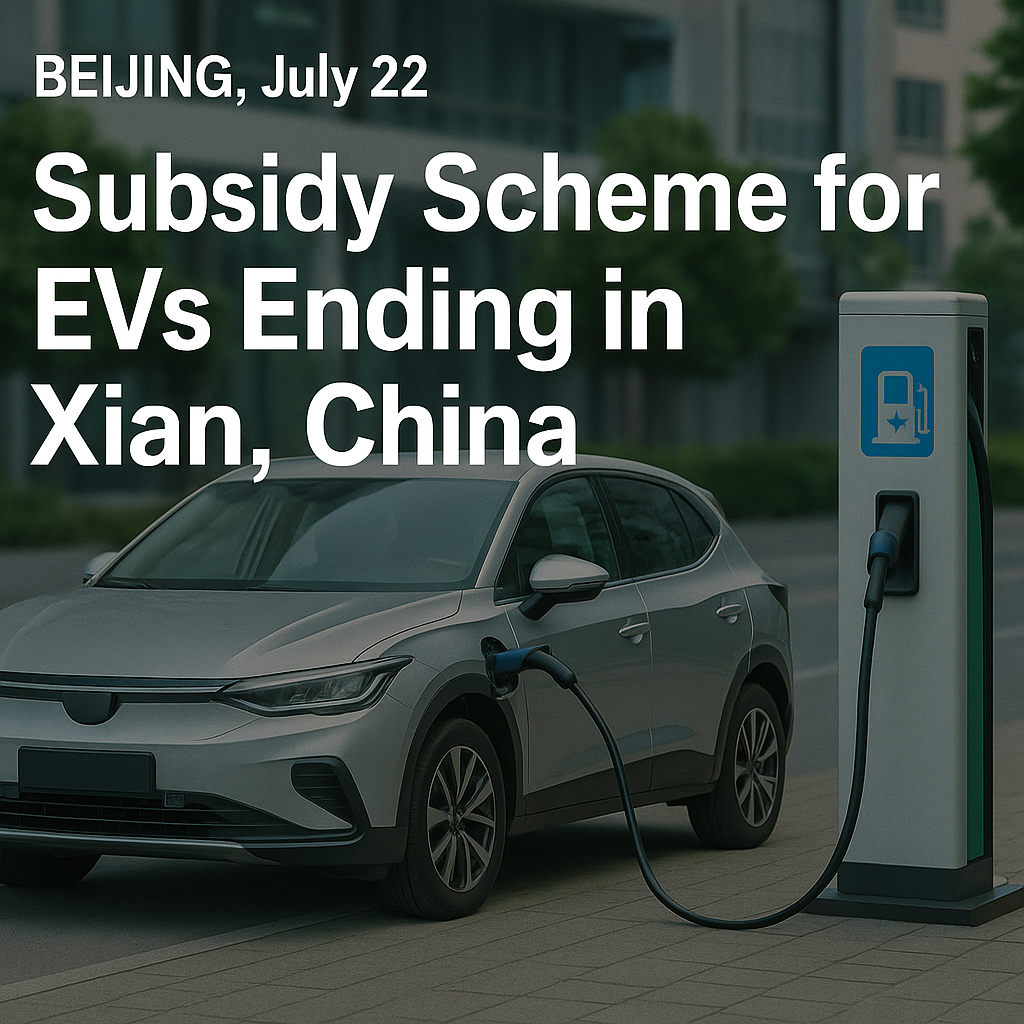Published: July 22, 2025
In a recent move that may impact the growing electric vehicle (EV) market in China, government-backed subsidies for EV and plug-in hybrid car purchases have ended in three major districts of Xi’an, the capital city of Shaanxi Province, as reported by Shaanxi Daily on Tuesday.
This marks the conclusion of a local incentive program introduced to encourage greener transportation, which has been a part of China’s broader push to reduce emissions and boost the adoption of clean energy vehicles.
🛑 Subsidy Program Phased Out in Xi’an
As per the local media report, three districts in Xi’an have already ended their EV subsidy programs as of last month. Authorities in these districts are expected to stop accepting subsidy applications later this July 2025. While no official reason was provided for the suspension, it aligns with broader funding constraints previously observed across other Chinese cities.
🚗 Cities Affected by Subsidy Suspensions
| City | Action Taken | Reason Cited |
|---|---|---|
| Xi’an (3 districts) | Subsidy program ended; applications closing | Not disclosed |
| Zhengzhou | Trade-in subsidies suspended | Initial government funding depleted |
| Luoyang | Trade-in subsidies suspended | First phase budget exhausted |
These changes reflect a temporary strain on budget allocations within China’s clean vehicle incentive structure.
📆 Future of Subsidies: What’s Next?
According to previous announcements by China’s state planner and the finance ministry, additional rounds of EV-related consumer trade-in subsidies are scheduled for release in July and October 2025. These new funds aim to support continued adoption of environmentally friendly vehicles, although coverage may vary by region based on available budgets and performance metrics.
🌍 Broader Impact on EV Market in China
With China leading the world in electric vehicle production and sales, shifts in government incentive programs can have significant ripple effects. While local suspensions in cities like Xi’an, Zhengzhou, and Luoyang may seem isolated, they highlight the importance of long-term fiscal planning to sustain EV momentum.
Buyers and automakers alike are watching closely to see how future subsidy phases unfold and whether they will be extended or restructured at the national level.
📌 Conclusion
As subsidy windows close in certain Chinese districts, consumers looking to benefit from EV incentives are encouraged to act quickly or wait for the next funding phase in October 2025. The Chinese government remains committed to clean energy goals, but local pauses in funding show the complexity of managing large-scale EV transitions.
Stay updated with the latest trends in China’s electric vehicle market right here.
🔖 Relevant Hashtags
#ChinaEVMarket
Ask ChatGPT
